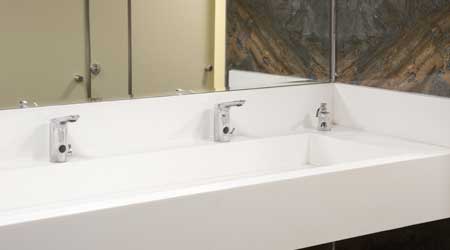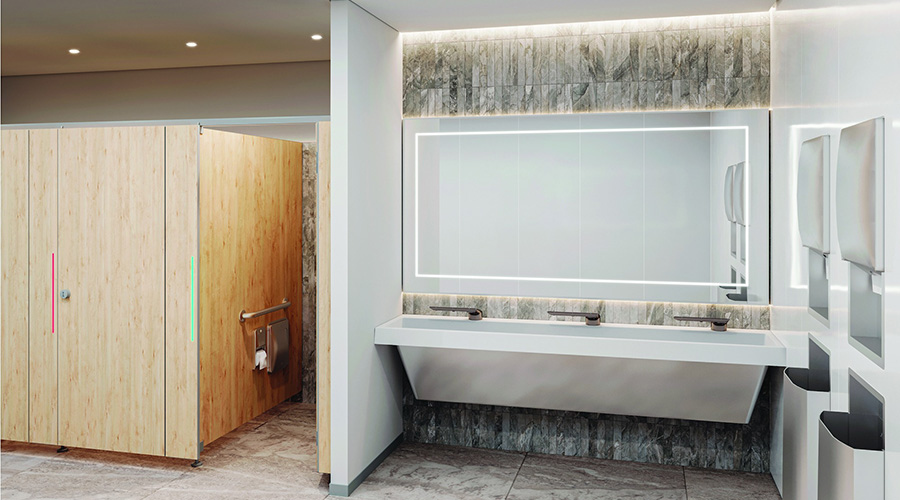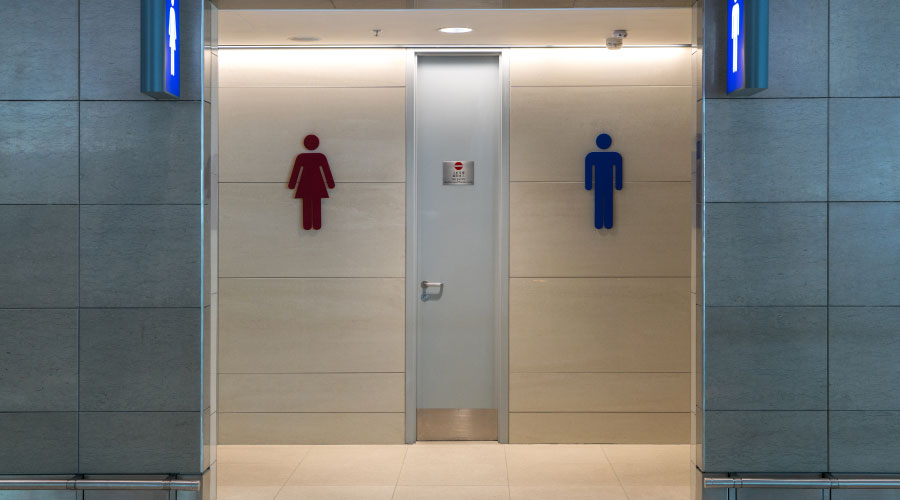How to Design Restrooms for Long-Term Operations
With restrooms, pay now or pay later. Restrooms have a 20 to 25-year service life, so good design choices at the outset mean lower operating costs over the life of the facility.
Restrooms in most facilities have a long service life, typically 20 or 25 years between renovations and upgrades. The long time span puts pressure on facility managers to make the right choices when deciding what components and finishes should be installed. Good choices mean lower operating costs for the life of the restroom. Poor choices mean higher operating costs and facilities that look dingy or dated before their time. Understanding how choices impact the long-term performance of restroom facilities will help facility managers in making those decisions.
Facility managers are under pressure to reduce maintenance, cleaning, energy, and supply costs throughout their facilities. Restrooms, though relatively small in size, typically require more maintenance and cleaning than almost all other areas in the building. They are significant users of water and energy. Their appearance and cleanliness affect building occupants and visitors alike, and are a major factor in how people view the facility.
If facility managers are to be successful in designing for the long term, they must become involved at the very start of the process. Designers must be made aware of the impact that choices they make during the design process will have on the long-term performance of the restroom. Don’t overlook anything. All elements of the restroom must be examined and planned for, from floor to ceiling, and all fixtures, surfaces, and finishes. And facility managers must resist design changes that are made to reduce renovation costs without adequate regard for what long-term impact they will have. Value engineering does not belong in restroom design.
A well-designed restroom renovation project that specifically examines the long term impact of product and design choices can be expected to have longer component service lives, sometimes as much as twice as long, while reducing cleaning and other maintenance costs by 30 percent or more.
Forget first costs
There always has been the tendency to focus on reducing first costs in renovation projects. But doing so tends to ignore the impact that some initial cost reductions will have on the long-term performance and appearance of those components over the 20 to 25 years service life of the restroom. It also fails to recognize that, over the service life of that restroom, energy, maintenance, and operating costs will greatly exceed those first costs of renovation. This is particularly important when efforts to reduce first costs result in a design that will cost more to operate and maintain.
Facility managers should focus on life-cycle costs instead. Designers must be directed to look long-term instead of seeking components and finishes that will reduce renovation costs. Spending a little more for higher quality components and finishes will translate directly into lower operating costs.
For example, even something as simple as installing an isolation valve on each fixture will allow maintenance personnel to repair or replace a single component without having to shut off water to the entire restroom or facility. The cost of the valves is trivial in comparison to the total cost of the restroom, yet their installation will reduce maintenance costs while resulting in less disruption for building occupants.
Similarly, getting fixtures and partitions off the floor makes it easier to clean. While wall- mounted fixtures and ceiling- and wall-mounted partitions may cost more to purchase and install, those additional first costs are more than offset by the savings in reduced time required to clean.
Durability must be a major factor when considering options. Remember the 20 to 25 year service life of the typical commercial or institutional restroom. Less durable materials may cost less but also may require replacement before a major renovation to the restroom is made.
Related Topics:














